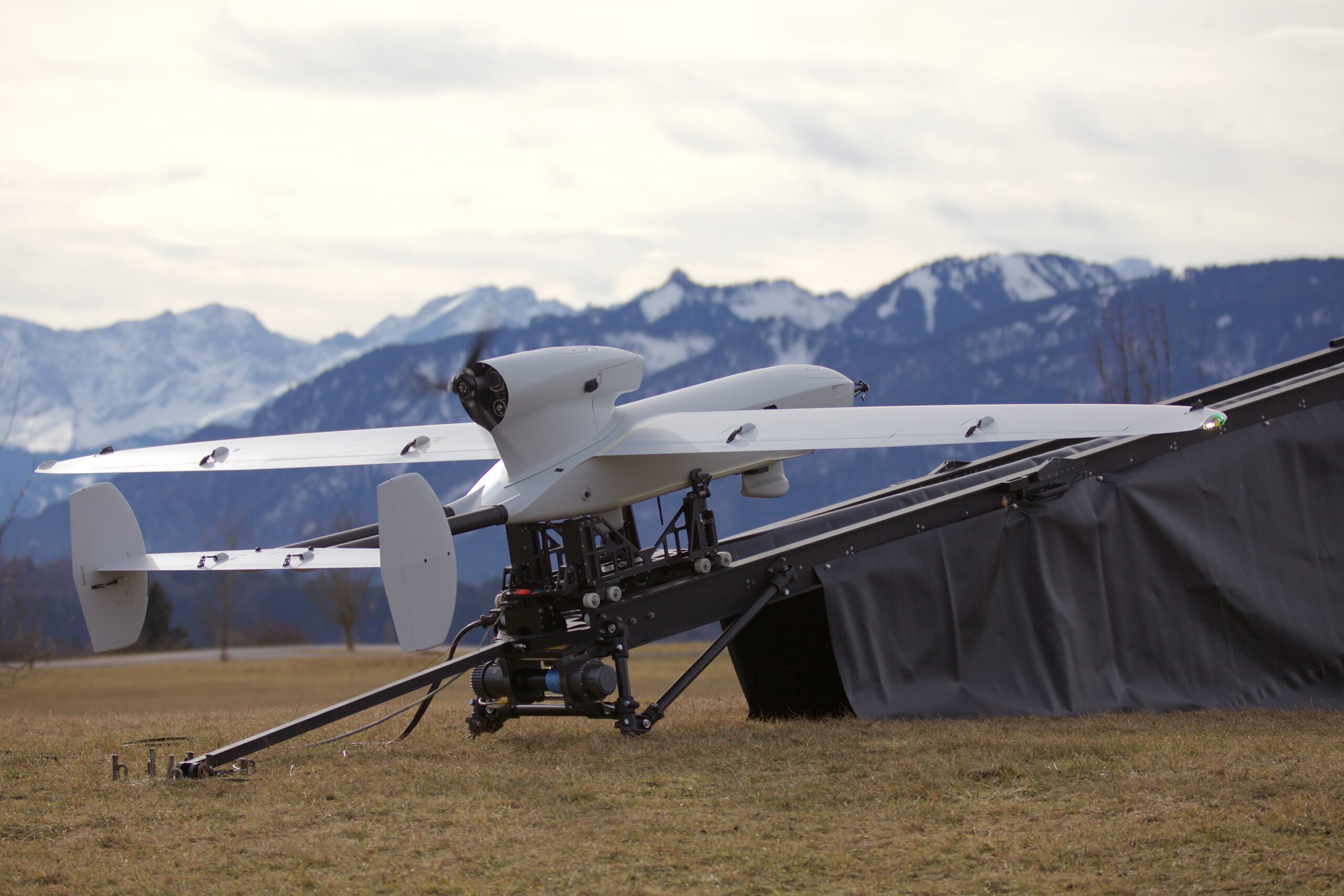The LUNA is one of the most widely used drones in the Bundeswehr, and it is also the oldest. The contractor for a much more powerful successor system has now declared insolvency.
In the past two weeks, the German Social Democratic Party (SPD) has decided to use the emergency brake against the arming of Bundeswehr drones. This concerned the HERON TP from Israel, which is to replace the HERON 1, which has been flown by the German Army since 2010. It is currently unclear whether and when the German government will try again to make up the decision for the armed HERON TP. Until then, drones will therefore only be used for reconnaissance. In addition to HERON 1, the Bundeswehr also flies the drone LUNA in Afghanistan and Mali. The abbreviation stands for “Airborne Unmanned Short-Range Reconnaissance Equipment”.
The LUNA is manufactured by EMT in Penzberg, Bavaria. With a two-stroke engine and a wingspan of over four metres, the fixed-wing aircraft can reach a speed of up to 160 kilometres per hour. The equipment includes an electro-optical video camera, as well as a thermal imaging camera or a digital camera for high-resolution still images. This data is transmitted to the ground in real time. In addition, there is another video camera that transmits a “quasi-pilot’s view” to the ground control station. The Fraunhofer Institute IOSB has optimised this technology with an analysis platform.
Several dozen crashes
The LUNA has been in the German inventory since 2003. This makes it currently the longest-used drone in the Bundeswehr. Together with the Israeli HERON 1, it is also the most intensively flown system. The HERON 1, which can remain in the air for over 24 hours, has logged over 50,000 flight hours. LUNA, whose maximum flight time is given as six hours, ranked second last year with 18,000 flight hours.
The figures show the importance of the LUNA in German military operations. The fleet, which is mainly deployed on missions abroad, currently consists of 84 aircraft, although at least 52 drones had to be replaced after crashes in the first ten years of use alone. While only the armament of the HERON is in question, a much bigger problem is now looming for the LUNA. For years, the Ministry of Defence has been planning the successor to the aging drone. This will no longer be a matter of ” short-range reconnaissance equipment”; instead, the Bundeswehr will receive a “HUSAR” (“Highly Efficient Unmanned Medium-Range Reconnaissance System”). First, 20 of the existing LUNA will be modernised. From the end of 2021, the successor systems, which EMT has been developing since 2010, should be in service. This LUNA NG (“Next Generation”) can remain in the air for 12 hours, its range should be at least 100 kilometres. A total of 65 new drones were to be procured.
Last week, however, EMT filed for insolvency due to “liquidity difficulties”. Among the reasons, the company writes that an embargo had been imposed on one of its customers. The “considerable loss of revenue” complained of could be a cancelled order from Saudi Arabia, which imported LUNA drones for a border protection programme, among other things. Other LUNA belonging to the Saudi military are also said to have been used in Yemen, and in at least one case a shootdown has been documented.
Four times the payload
The LUNA NG is twice as heavy as its predecessor. The maximum take-off weight increases from 40 to 110 kilograms. This quadruples the payload, the drone can transport 20 kilograms. According to the Ministry of Defence, the LUNA NG will be equipped with the surveillance module from I2AX, a company from Los Angeles. The equipment also includes a laser marker for targets on the ground.
So far, the Bundeswehr already has 20 modernised LUNAs. In its press release on the insolvency, the company leaves open whether EMT will start the delivery of the follow-up systems in a year as planned. A month ago, however, the Ministry of Defence had already announced delays due to the current Covid 19 pandemic. Now it says the expected “new legal constellation” could lead to “further delays” and a new schedule. According to Thomas Silberhorn, State Secretary of the Ministry of Defence, at least the maintenance and repair of drones that have already been delivered should be secured. The company could then be “restructured”. Its owner has made representations to the Ministry of Defence on this.
In November, the Ministry of Defence announced another new drone project. As FALKE (“Remotely Operated Reconnaissance System, Airborne, Short Range”), the Bundeswehr wants to procure a “rapidly deployable unmanned system” that, weighing less than ten kilograms, is to provide reconnaissance in all climatic zones over distances of up to 30 kilometres. Like the LUNA, the drones are to be fixed-wing aircraft. The Bundeswehr plans to procure a total of 14 FALKE systems with an undisclosed number of aircraft. A call for tenders has not yet been issued.
Image: EMTPenzberg, LUNA NG , CC BY-SA 4.0





Leave a Reply